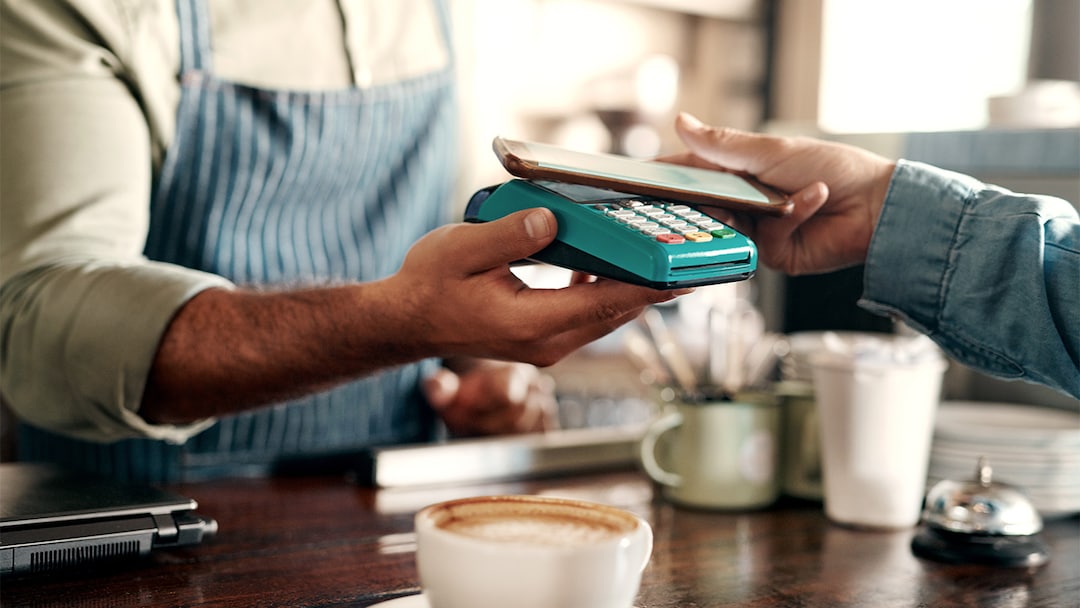Ways to protect your digital wallet

Quick insights
- Strong passwords and regular software updates may help to protect your digital wallet.
- Using Radio Frequency Identification (RFID) blocking phone cases and disconnecting from public Wi-Fi, when possible, could add another layer of protection.
- If your information is compromised, it can be helpful to change your passwords and contact your digital wallet provider.
Digital wallets are becoming increasingly popular with consumers as a way to pay in person or online. If you’ve been using or are considering using a digital wallet, you may want to think about how to keep the information you put into it secure. In this article, we’ll share some ways to help protect your digital wallet and what to do if it’s been compromised.
Understanding digital wallets
A digital wallet, also known as an e-wallet, securely stores payment information and passwords for numerous payment methods and websites. Digital wallets can be used with mobile payment systems or can be used as an online payment method, depending on the platform.
They may also be able to store details such as loyalty card information, personal identification, insurance cards and digital coupons.
A digital wallet can offer some benefits including:
- Security
- Convenience
- Speed
Digital wallets also may integrate budgeting and spending tracking tools in their platform to help users manage their finances.
Methods for securing your digital wallet
Digital wallets often have robust and modern security features built in. Many digital wallets use multi-factor authentication, biometric data or passcodes for an added layer of security when making purchases. In addition, they often mask card and account information using encryption or tokenization to help protect your card’s info during a transaction.
There also are ways you can proactively protect your digital wallet to enhance its security. Consumers looking for ways to protect and secure their digital wallet may want to consider the following tips:
Use strong passwords
Ensure that the password for your digital wallet is long, complex and unique. A strong password should include a mix of letters, numbers and special characters. A password manager can also generate and store complex passwords securely.
Regularly update software
To protect your phone and digital wallet, keep your digital wallet software up to date. Software developers frequently release updates that fix security loopholes that could be exploited by hackers.
Back up your wallet
Regularly back up your wallet to protect against data loss. If you’re using a physical backup, such as a USB drive, storing it in a safe location could help prevent physical theft. For cloud backups, you could have your data encrypted and use a cloud service provider that has robust security measures in place.
Protect your device
Most smartphones come with digital wallets preloaded into the operating system. Keeping your digital wallet secure may also mean securing your phone.
You may want to practice phone security measures as well, including:
- Securing your lock screen
- Regularly updating your phone’s operating system
- Enabling biometric security features
How to prevent unauthorized scanning
You may be concerned about protecting your phone from unlawful scanning. There are some actions you can take to help prevent someone from stealing your phone’s information, including:
Use RFID blocking cases or sleeves
RFID technology can be used to scan devices and attempt to steal information. To help protect against this, you may want to consider using an RFID-blocking case or sleeve for your phone. These cases are designed with materials that block electromagnetic fields, which could help prevent scanners from reading your device’s data.
Disable Bluetooth
Bluetooth can be used to make unauthorized connections to your device. You may want to disable this feature when you are not actively using it to protect your phone.
Use public Wi-Fi cautiously
Public Wi-Fi networks can be insecure and may provide an opportunity to intercept data. When possible, use a virtual private network when connecting to public Wi-Fi and avoid making significant transactions when using public wireless networks.
What to do if your digital wallet is compromised
If your digital wallet is compromised, there are actions you can take to help prevent or limit fraudulent transactions from occurring. A few options include:
Change your passwords
You may want to change your passwords and security details associated with your digital wallet and any related accounts. If you use the same password for other accounts, you may want to change the password on those accounts as well.
Notify your provider
You can contact the customer support team of your wallet provider to notify them of the breach. They may be able to offer specific advice, help secure your account and track unauthorized transactions.
Monitor your accounts
Keep a close eye on your wallet and any related financial accounts for unusual activity. Setting up alerts on your accounts can help notify you of any new transactions.
Set up a new wallet
If possible, transfer your digital assets to a new wallet. When setting up the new wallet, it may help to review and adopt security measures, such as two-factor authentication and multi-signature protocols.
In summary
Digital wallets can store multiple payment types and sensitive bank information. To protect your digital wallet, it may help to create strong passwords and regularly update your wallet’s software. You may want to consider using an RFID blocking phone case if you’re concerned about unauthorized scanning of your smartphone. If your digital wallet has been compromised, reach out to your digital wallet provider, change your passwords and monitor your accounts for unusual or fraudulent activity.



